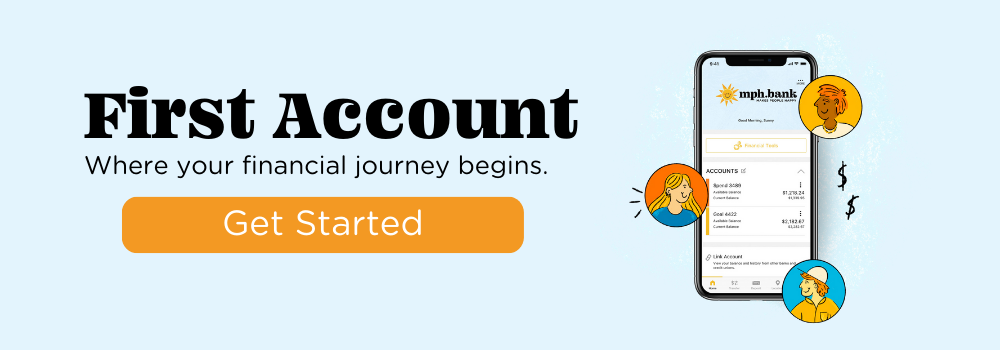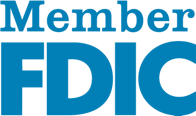Believe it or not, there are a significant number of people who still do not own a bank account. In fact, according to the Federal Deposit Insurance Corporation report, approximately 8.5% of U.S. households are "unbanked."
Related Article: 5 Steps For Opening a Bank Account When Your Under 18
That's about 14 million adults and 6 million children who don't have access to a checking or savings account. That’s a lot of cash under a ton of mattresses! There are a variety of factors that contribute to someone deciding not to open an account with a bank, and like with many decisions that involve our money, cost is a big one!
It’s important to learn how cost is structured in banking so that you can be informed to help make the most bang for your buck when you decide to securely deposit your money with a bank you trust.
Types of Checking Accounts and their Benefits
A checking account is also referred to as a demand account, spend account, or a transactional account. It refers to an account opened in a bank, credit union, or other financial institution that allows the owner to make deposits and withdrawals. The fact that account holders can freely withdraw cash from their checking accounts makes them different from other account types like retirement and savings accounts.
Here are 6 of the most common account types for checking accounts and the benefits they offer:
- Regular Checking Account:
Regular account services include making deposits and withdrawals. If you are looking to occasionally get cash at an ATM, use a debit card or write a few checks, this may be the ideal account. Regular checking accounts have little to no interest and a small monthly or yearly fee. - Premium Checking Account:
Ideal for people with a five-figure sum or more to keep in a checking account. Having such a high balance allows you to enjoy perks such as free checks, ATM fee reimbursements, and earning extra cash from interest on your money. You will need to maintain a higher minimum balance with a premium account to likely avoid fees. - Interest Bearing Account:
This checking account allows you to earn interest. In other words, it gives you a small monthly return for the balance in your account. There may be specific requirements to achieve particular Annual Percentage Yields (APYs), such as a minimum number of debit card transactions. The interest rates vary with institutions. - Free Checking Account:
This account doesn't have a minimum balance requirement and doesn't charge recurring fees like a monthly maintenance fee. However, you might still pay for other products or services like a check, out-of-network ATM, or stop payment. Since you get the benefits of not paying a monthly fee, make sure to check and see if you’d still earn interest from this account. - Low Balance Checking Account:
Also known as a lifeline account, this account type is for a customer who can only maintain a small amount of cash in their account. Institutions may require you to do other things that save it money in exchange for allowing you to keep a small amount. For instance, they may ask you to write a limited number of monthly checks. Sometimes you may not even have the privileges to write checks. - Second-Chance Checking Account:
If your checking account has been closed by a bank due to an unpaid negative balance and you are ready to start over, this is the account you need. You may have to pay a monthly fee in exchange, up to $20 in some cases. Other than that, your account may have some restrictions absent in other checking accounts.
Upfront Checking Account Costs vs. Bank Fees on the Backend
An upfront account opening cost refers to the initial sum of money that a bank will charge you to open an account. Many financial institutions do not charge customers to open accounts because it would be more difficult to attract the money they require to operate. However, they often set fees to keep the account operational. One is a monthly maintenance fee that you pay for having an account. This amount varies based on your account type and the financial institution you're banking with.
Besides the regular maintenance fees, banks may have other charges like extra costs for receiving a paper statement instead of email delivery. Another common fee is when you decide to cancel an account soon after opening it. Reading through the terms and conditions to understand the backend fees associated with your account is critical. Stipulations and other hidden fees are often lurking, so look over the fine print before you jump at the sticker deal!
How much does it Cost to Open a Checking Account?
These costs can vary significantly depending on the type of account you opt for and the financial institution you choose to trust with your money.
1. Account Opening Fees
Many banks, both traditional and online, do not charge a fee to open a basic checking account. However, some financial institutions may require an initial deposit to fund your account. The minimum deposit requirement can vary widely, so it's essential to research different banks to find one that aligns with your budget.
2. Monthly Maintenance Fees
One of the most common costs associated with checking accounts is the monthly maintenance fee. Traditional banks typically charge these fees to cover the operational costs of maintaining physical branches. The fees can range from a few dollars to more substantial amounts, depending on your account type and the bank's policies.
Online-only banks, on the other hand, often have an advantage in this area. Due to their lower overhead costs, they can offer checking accounts with little to no monthly maintenance fees, allowing you to save money over time.
3. Transaction Fees
Another factor to consider is transaction fees. While many banks offer a certain number of free transactions each month, additional transactions beyond that limit may incur fees. These transactions could include ATM withdrawals, paper checks, or electronic transfers. Understanding your transaction habits and selecting an account that aligns with them can help you avoid unexpected fees.
4. ATM Fees
Access to ATMs is essential for withdrawing cash and managing your checking account. Traditional banks typically have a network of ATMs that you can use for free. However, if you use an out-of-network ATM, you may be subject to fees from both your bank and the ATM owner. Online banks often reimburse these fees up to a certain limit, making it more convenient for customers to access cash.
5. Overdraft Fees
Overdraft fees are charged when you spend more money than you have in your checking account. These fees can be substantial and can quickly add up if you frequently overdraft your account. Some banks offer overdraft protection services, while others may decline transactions that would result in overdrafts.
6. Foreign Transaction Fees
If you travel internationally or make purchases from foreign merchants, you may encounter foreign transaction fees. These fees are typically a percentage of the transaction amount and can vary among banks. Consider choosing a checking account that offers low or no foreign transaction fees if you engage in international transactions frequently.
7. Account Closing Fees
While it's not common, some banks may charge a fee if you decide to close your checking account within a certain timeframe after opening it. Make sure to review the terms and conditions of your account to avoid any unexpected charges if you decide to switch banks.
Are there upfront costs to opening a new checking account?
Beyond the ongoing fees, some checking accounts require an upfront investment to get your foot in the door. While many banks have embraced no-minimum, no-fee options, be prepared for the possibility of encountering these potential costs.
Minimum Opening Deposit
This is the initial sum you need to deposit to activate your account. It can range from a symbolic $1 to a hefty $250, depending on the account type and bank. Some premium accounts with high interest rates or extensive perks might demand a more significant initial deposit.
Account Activation Fee
Some banks charge a one-time fee to set up your account and get things rolling. This fee can range from around $5 to $20, though it's becoming increasingly rare.
Debit Card Fee
Don't let the plastic fool you! Some banks charge a yearly fee for issuing and maintaining your debit card. These fees typically fall between $5 and $15, so factor that into your initial budget.
Wire Transfer Fee
If you plan to send or receive wire transfers through your new account, expect an additional charge per transaction. These fees can vary greatly, so do your research and compare options before opening an account if wire transfers are a crucial need.
Avoiding the Initial Sting
Remember, not all checking accounts come with upfront costs. Several banks offer free options with no minimum deposits or activation fees. Look for "basic" or "student" accounts, which tend to be fee-free. Be wary of high-interest accounts with significant initial deposits, as the potential benefit might not outweigh the immediate cost.
Ultimately, the key is to be informed and transparent. Ask your bank about any potential upfront costs associated with the checking account you're considering. Compare options, prioritize your needs, and choose the account that offers the best value for your financial situation. By making an informed decision, you can navigate the initial investment and start your banking journey without unwanted surprises.
What Do You Need to Open a Checking Account?
Once you understand the cost and learn that opening an account is worth it, here are just a few required items you will need to open your new bank account:
- A valid photo ID issued by the government, like a passport or a driver's license.
- Basic personal information like date of birth, email, taxpayer identification number or social security number, or phone number.
- An initial deposit.
- If you are opening a joint account, you will need the identification details of other applicants.
- A co-owner if you are under the legal age of 18 years. It could be a parent or guardian.
Opening a Checking Account From a Branch vs. Signing Up Online
You can choose to open an account at a branch if the bank offers brick-and-mortar locations, like most traditional banks, or you can open the account online. The required information will be similar, whether you are opening a savings or checking account. Usually, an online account can offer several benefits over that of a traditional bank due to its lack of overhead that comes with having to operate branches around the country. This also allows for online-only banks to offer lower fees and better interest rates, putting their added value back into the customers pockets.
Some consumers are more confident banking with a traditional brick and mortar bank because of their unfamiliarity with conducting financial business online. It's normal to fear having your identity or money fall into fraudulent hands. Nonetheless, there are reputable and reliable online banking providers like mph.bank that are FDIC insured to make sure your money is protected.
Join mph.bank today. Our team of experienced and talented financial professionals are ready to guide you.
What do fish use as currency to purchase anything?
Sand Dollars! Sign up to receive important information on banking, financial tips, and jokes like this directly to your inbox










